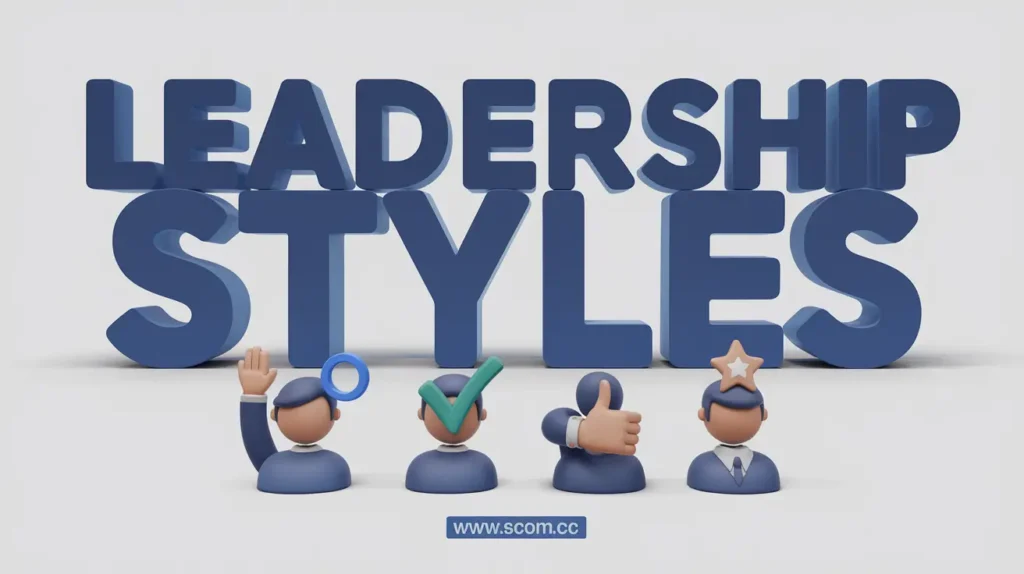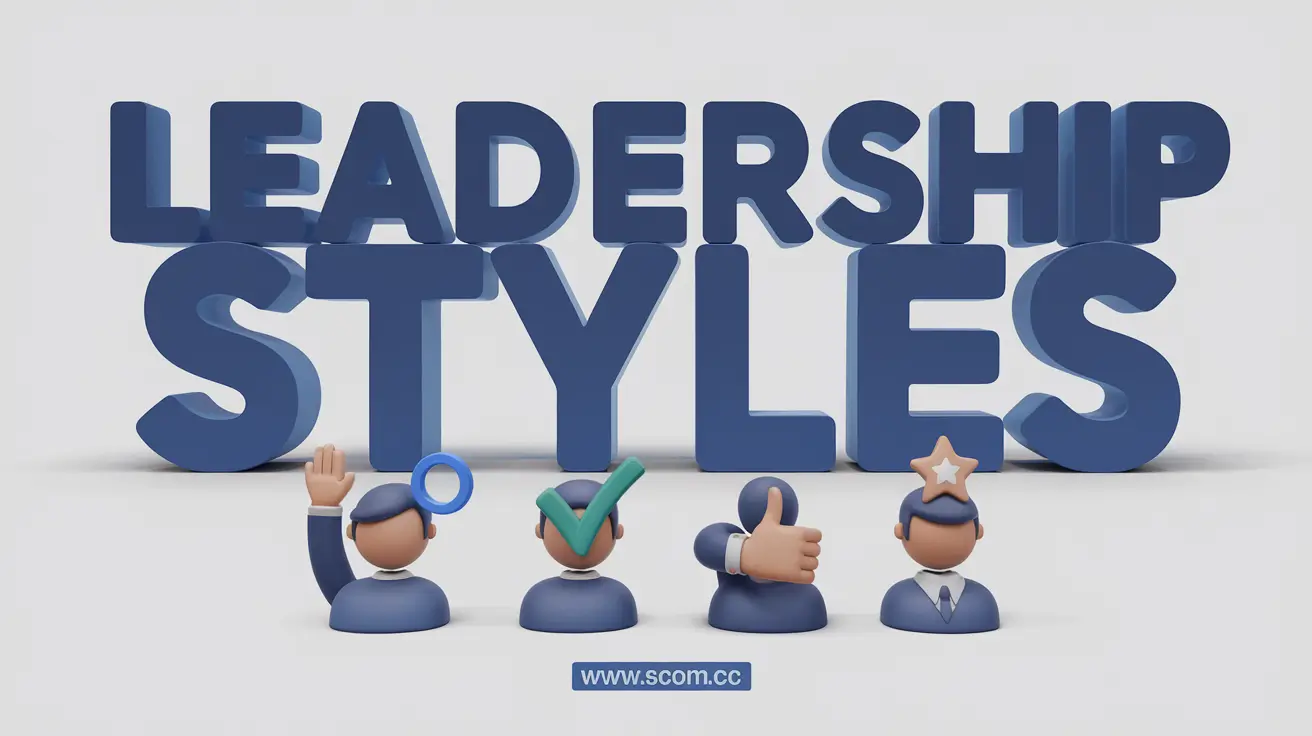Leadership Styles

- Leadership Styles: Finding the Right Approach for Your Team
- Understanding Leadership Styles
- Matching Leadership Styles to Team Needs
- Developing Leadership Skills
- Summary Table
-
FAQ
- What is the best leadership style for a new team?
- How can democratic leadership enhance team performance?
- When should transformational leadership be used?
- What are the drawbacks of a laissez-faire leadership style?
- How can I adapt my leadership style to different situations?
- What skills are essential for effective leadership?
- How can I determine the right leadership style for my team?
Leadership Styles: Finding the Right Approach for Your Team
Effective leadership is pivotal in guiding teams toward achieving goals and fostering a productive work environment. The right leadership style can enhance team performance, boost morale, and drive organizational success. However, there isn’t a one-size-fits-all approach; different situations and team dynamics require different leadership styles. This guide explores various leadership styles, their characteristics, and how to find the right approach for your team.
Understanding Leadership Styles
Leadership styles are the methods and approaches used by leaders to motivate, manage, and guide their teams. Each style has its strengths and weaknesses, and understanding them can help you choose the most effective approach for your specific team and organizational context.
Autocratic Leadership
Autocratic leadership is characterized by centralized decision-making where the leader retains most of the control and authority. This style involves making decisions independently and expecting subordinates to follow orders without input.
Key Characteristics:
- Centralized Control: The leader makes decisions without consulting team members.
- Clear Instructions: Provides specific directions and closely supervises tasks.
- Quick Decision-Making: Ideal for situations requiring swift decisions and clear guidance.
Advantages:
- Efficiency: Decision-making is quick and straightforward.
- Clear Expectations: Provides clear instructions and expectations, reducing ambiguity.
Disadvantages:
- Reduced Employee Engagement: Limits input from team members, potentially lowering morale.
- Dependency: Can create dependency on the leader, reducing team autonomy.
When to Use:
- Crisis Situations: When immediate decisions are needed.
- New or Inexperienced Teams: When clear guidance is required.
Democratic Leadership
Democratic leadership, also known as participative leadership, involves team members in the decision-making process. This style values collaboration and input from all team members.
Key Characteristics:
- Collaborative Decision-Making: Seeks input and consensus from team members.
- Encourages Participation: Values feedback and suggestions.
- Shares Authority: Distributes authority and responsibility among team members.
Advantages:
- Increased Engagement: Team members feel valued and are more engaged.
- Enhanced Creativity: Diverse perspectives contribute to creative solutions.
Disadvantages:
- Slower Decision-Making: Involves more time to gather input and reach consensus.
- Potential for Conflict: Differing opinions can lead to disagreements and slow down progress.
When to Use:
- Creative Projects: When diverse input can enhance creativity and innovation.
- Established Teams: Teams with experience and confidence in their roles.
Transformational Leadership
Transformational leadership focuses on inspiring and motivating team members to exceed their own expectations and achieve higher levels of performance. Transformational leaders emphasize vision, enthusiasm, and personal development.
Key Characteristics:
- Visionary: Creates and communicates a compelling vision for the future.
- Inspirational: Motivates and encourages team members to reach their potential.
- Focus on Development: Supports personal and professional growth.
Advantages:
- High Motivation: Inspires and energizes team members.
- Strong Commitment: Builds strong commitment to organizational goals.
Disadvantages:
- Requires Charisma: Relies on the leader’s ability to inspire and motivate.
- Potential for Overwork: High expectations can lead to burnout if not managed carefully.
When to Use:
- Change Initiatives: During periods of organizational change or transformation.
- Growth and Development: When aiming to develop and elevate team members.
Transactional Leadership
Transactional leadership is based on a system of rewards and penalties to manage team performance. Leaders using this style focus on maintaining order and ensuring that tasks are completed according to established procedures.
Key Characteristics:
- Reward-Based: Uses rewards and incentives to motivate team members.
- Clear Structure: Establishes clear procedures and expectations.
- Performance Monitoring: Closely monitors performance and provides feedback.
Advantages:
- Clear Expectations: Provides clear guidelines and expectations.
- Structured Approach: Effective for managing routine tasks and operations.
Disadvantages:
- Limited Innovation: May stifle creativity and innovation due to rigid structures.
- Short-Term Focus: Focuses on immediate results rather than long-term growth.
When to Use:
- Routine Tasks: In environments where tasks and procedures are well-defined.
- Performance Management: When specific performance goals need to be met.
Laissez-Faire Leadership
Laissez-faire leadership involves a hands-off approach where team members have a high degree of autonomy and responsibility. Leaders provide minimal guidance and allow team members to make decisions independently.
Key Characteristics:
- High Autonomy: Gives team members the freedom to make decisions.
- Minimal Supervision: Provides limited direction and oversight.
- Encourages Independence: Values self-management and initiative.
Advantages:
- Empowerment: Empowers team members and fosters independence.
- Encourages Innovation: Allows for creative and innovative solutions.
Disadvantages:
- Lack of Direction: May lead to confusion or lack of coordination.
- Variable Performance: Performance can vary widely depending on individual capabilities.
When to Use:
- Experienced Teams: Teams with high levels of expertise and self-motivation.
- Creative Environments: When innovation and autonomy are prioritized.
Matching Leadership Styles to Team Needs
Choosing the right leadership style depends on various factors including team composition, organizational goals, and situational needs. Here’s how to match leadership styles to team needs:
Assess Team Dynamics
Evaluate the strengths, weaknesses, and preferences of your team members. Consider their experience levels, skills, and working styles:
- New Teams: May benefit from autocratic or transactional leadership to provide clear guidance and structure.
- Experienced Teams: Can thrive under democratic or laissez-faire leadership where input and autonomy are valued.
Consider Organizational Goals
Align your leadership style with the organization’s goals and objectives:
- Change Management: Transformational leadership can help drive and manage change effectively.
- Routine Operations: Transactional leadership is suitable for maintaining consistency and efficiency in daily operations.
Evaluate the Situation
Different situations may require different approaches:
- Crisis Situations: Autocratic leadership can provide decisive action and clear direction.
- Innovation Projects: Democratic or laissez-faire leadership can foster creativity and collaboration.
Adapt and Flex
Be flexible and willing to adapt your leadership style based on evolving needs and circumstances:
- Ongoing Evaluation: Regularly assess the effectiveness of your leadership style and make adjustments as needed.
- Feedback and Adjustment: Solicit feedback from team members and adjust your approach to address challenges and improve performance.
Developing Leadership Skills
To effectively implement the right leadership style, it’s essential to develop key leadership skills:
- Self-Awareness: Understand your own strengths, weaknesses, and leadership preferences.
- Communication: Develop strong communication skills to convey expectations, provide feedback, and facilitate open dialogue.
- Emotional Intelligence: Enhance your ability to empathize with team members and manage relationships effectively.
- Decision-Making: Improve your decision-making skills to make informed choices that align with team and organizational goals.
- Adaptability: Cultivate the ability to adapt your leadership style to different situations and team needs.
Summary Table
| Leadership Style | Key Characteristics | Advantages | Disadvantages | When to Use |
|---|---|---|---|---|
| Autocratic | Centralized control, clear instructions, quick decision-making | Efficiency, clear expectations | Reduced employee engagement, dependency | Crisis situations, new or inexperienced teams |
| Democratic | Collaborative decision-making, encourages participation, shares authority | Increased engagement, enhanced creativity | Slower decision-making, potential for conflict | Creative projects, established teams |
| Transformational | Visionary, inspirational, focus on development | High motivation, strong commitment | Requires charisma, potential for overwork | Change initiatives, growth and development |
| Transactional | Reward-based, clear structure, performance monitoring | Clear expectations, structured approach | Limited innovation, short-term focus | Routine tasks, performance management |
| Laissez-Faire | High autonomy, minimal supervision, encourages independence | Empowerment, encourages innovation | Lack of direction, variable performance | Experienced teams, creative environments |
FAQ
What is the best leadership style for a new team?
For a new team, autocratic or transactional leadership styles may be most effective. These styles provide clear direction and structure, which can help establish processes and expectations during the early stages.
How can democratic leadership enhance team performance?
Democratic leadership enhances team performance by involving team members in decision-making, which increases engagement and ownership. This collaborative approach can lead to more innovative solutions and a stronger commitment to goals.
When should transformational leadership be used?
Transformational leadership is particularly effective during periods of change or when aiming to inspire and motivate team members to exceed their own expectations. It is well-suited for growth and development initiatives.
What are the drawbacks of a laissez-faire leadership style?
Laissez-faire leadership can lead to a lack of direction and coordination, particularly if team members are not self-motivated or lack experience. Performance can vary widely based on individual capabilities and motivation.
How can I adapt my leadership style to different situations?
Adapt your leadership style by assessing the needs of your team, organizational goals, and the specific situation at hand. Be flexible and willing to adjust your approach based on feedback and evolving circumstances.
What skills are essential for effective leadership?
Essential leadership skills include self-awareness, communication, emotional intelligence, decision-making, and adaptability. Developing these skills can help you effectively implement and adjust your leadership style.
How can I determine the right leadership style for my team?
To determine the right leadership style, evaluate your team’s dynamics, organizational goals, and the specific situation. Consider factors such as team experience, the nature of the tasks, and the desired outcomes to choose the most effective approach.

If you enjoyed this article and found it valuable, we encourage you to explore our news and valuable information section, where you'll find more relevant and up-to-date content that may pique your interest. Additionally, if you are seeking advice or need guidance on a specific topic, we suggest visiting our services section. There, you will find a variety of options designed to assist and support you in addressing your needs. Feel free to check out both sections to get the information and assistance that best suits your requirements.

Leave a Reply